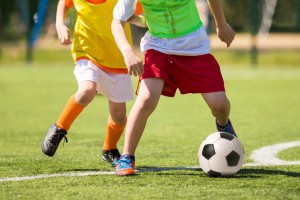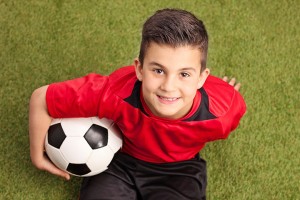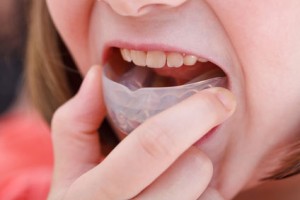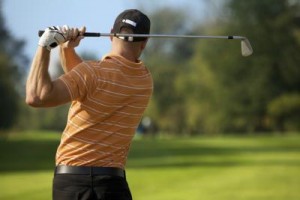 More than 1.3 million children were admitted to the ER due to sports injuries in 2012. According to the National Electronic Injury Surveillance Survey, football was the leading cause of these injuries among college and high school athletes with an estimated 466, 492 kids treated. The majority of the kids experienced sprained ankles, torn knee ligaments and busted heads. Football is a favourite sport for children as young as five years, high school kids and college athletes hence, associated with the highest number of traumatic injuries. Overuse injuries are also likely to occur as a result of heavy training and conditioning while concussions develop due to high-speed hits with the ground or other players. Here are other common injuries kids develop when playing football.
More than 1.3 million children were admitted to the ER due to sports injuries in 2012. According to the National Electronic Injury Surveillance Survey, football was the leading cause of these injuries among college and high school athletes with an estimated 466, 492 kids treated. The majority of the kids experienced sprained ankles, torn knee ligaments and busted heads. Football is a favourite sport for children as young as five years, high school kids and college athletes hence, associated with the highest number of traumatic injuries. Overuse injuries are also likely to occur as a result of heavy training and conditioning while concussions develop due to high-speed hits with the ground or other players. Here are other common injuries kids develop when playing football.
Concussions
This form of injury affects the head and is the most common form of football injury. Kids aged 12-15 are prone to concussions. Even with helmets, players still get injured as a result of sudden jerking motions or direct hits to the head. The victim may not pass out immediately but may develop symptoms like dizziness, headache, nausea, blurry vision, confusion, numbness, loss of balance, loss of memory or slurred speech.
Knee Injury
Medial collateral ligament and anterior cruciate ligament are the most common knee injuries. The injuries develop during a tackle. The injury may also affect the cartilage and the meniscus of the joint, which later forms into arthritis. Since young kids have a weak growth plate, fractures develop in the knee instead of tearing.
Shoulder dislocation
This type of injury occurs when the shoulder develops a sprain on the joint close to the collarbone. Young teenagers and growing kids often develop a fracture at the growth plate at the end of the clavicle, a condition known as AC separation. An unstable shoulder and tears along the tissue of the shoulder socket may also occur.
Overuse Injuries
Back pain is a fairly common occurrence among young football players and is caused by overuse. The player may also develop patellar tendinitis, common knee injury problem that is usually treated through a strengthening program.
How Chiropractic Care Helps Kids Playing Football
Chiropractic care has become a common form of preventive measure among kids playing football. Most injuries are not apparent as the adrenaline felt by players during a competition can mask the pain. There are cases where patients develop injuries years after impact. Sunbury chiropractors emphasise on pre-sports preparation to prevent the most common injuries among young players. Their expertise in the neuromusculoskeletal system allows them to provide the best ways to avoid injuries when playing and offer advice on how to condition the body to prepare it for rough play.
Also, regular chiropractic care for kids enables kids to enjoy the same benefits as adults, including keeping the body balanced, flexible and offers ways to alleviate aches and pains to keep the child performing to the best of his ability. While buying protective gear that is essential for kids, parents should consider making regular chiropractic care appointments as a preventive measure for football injuries.


